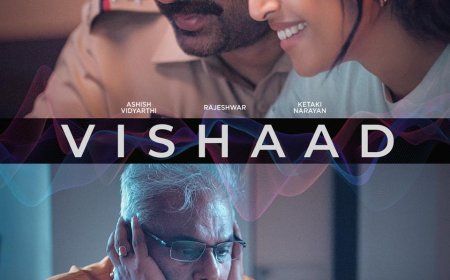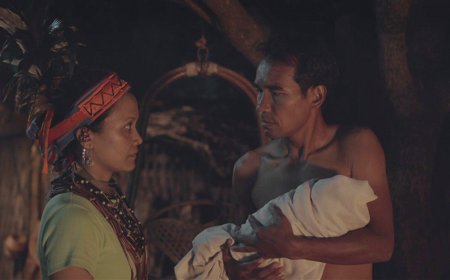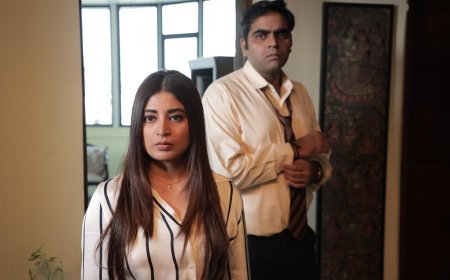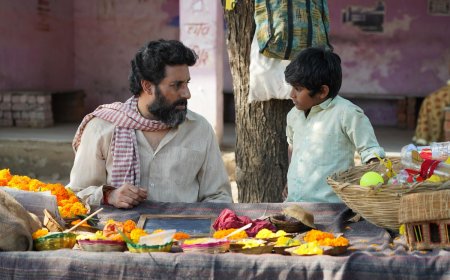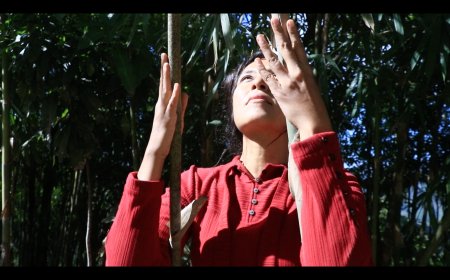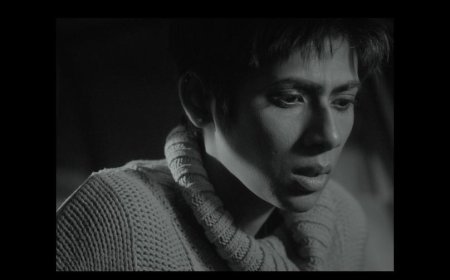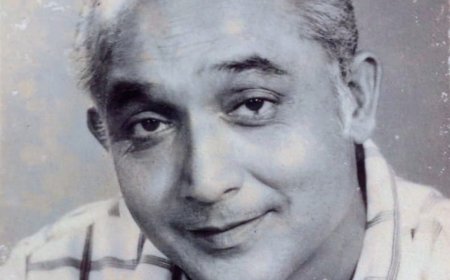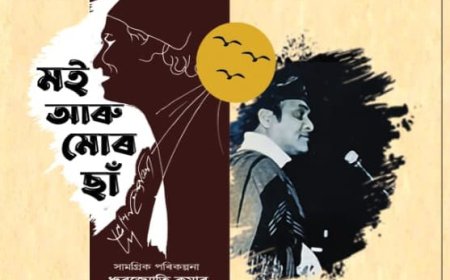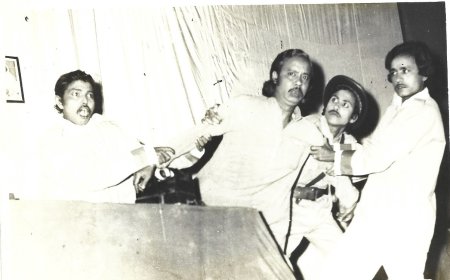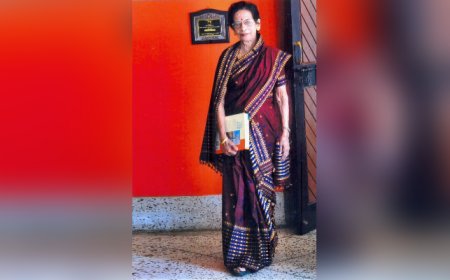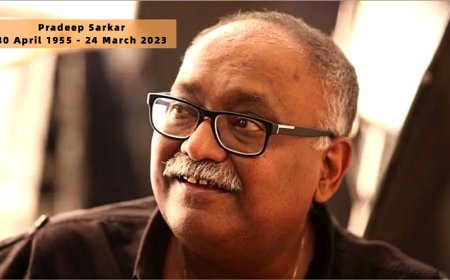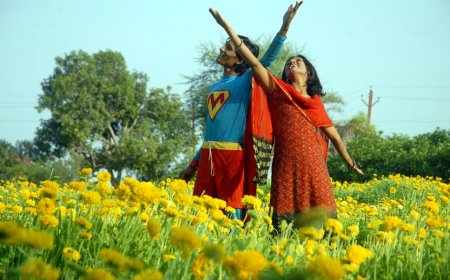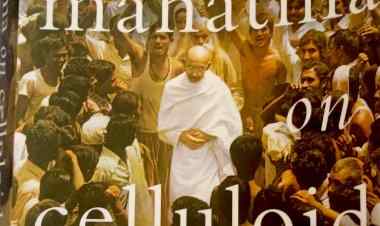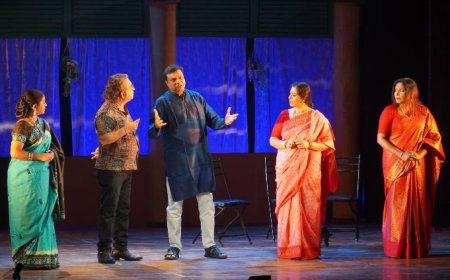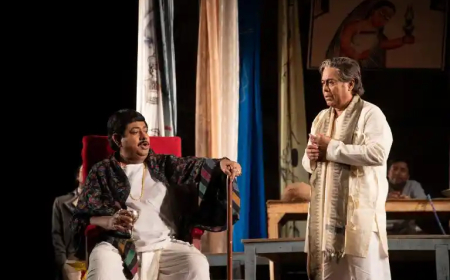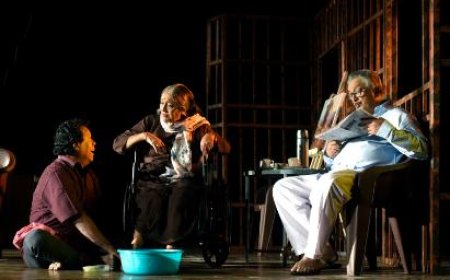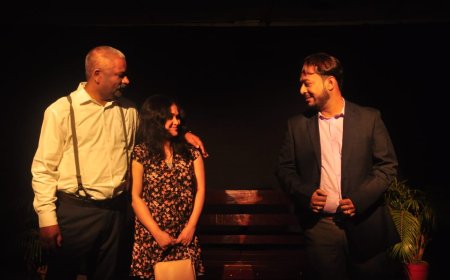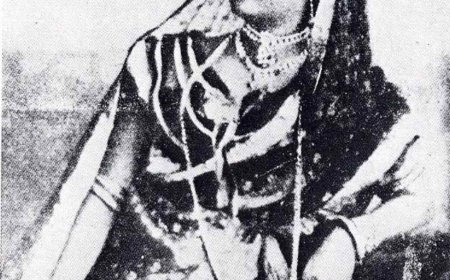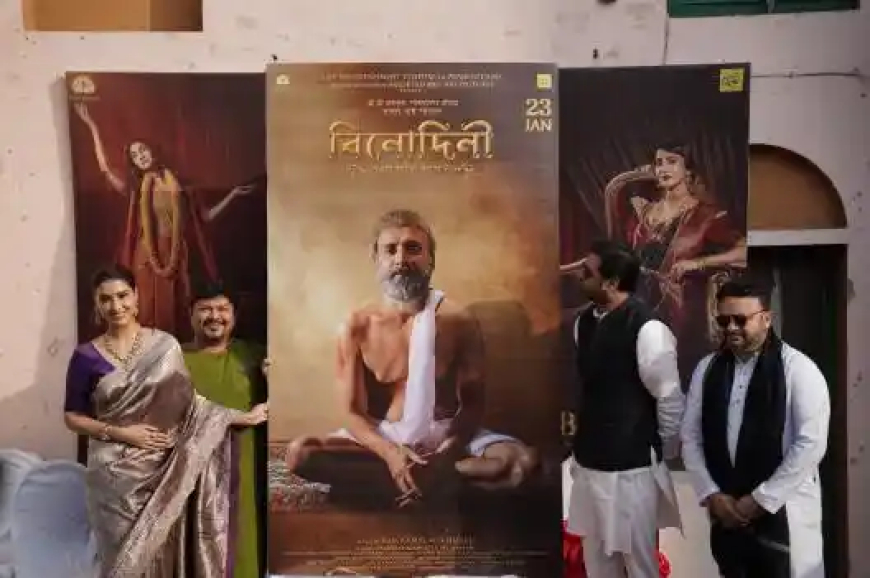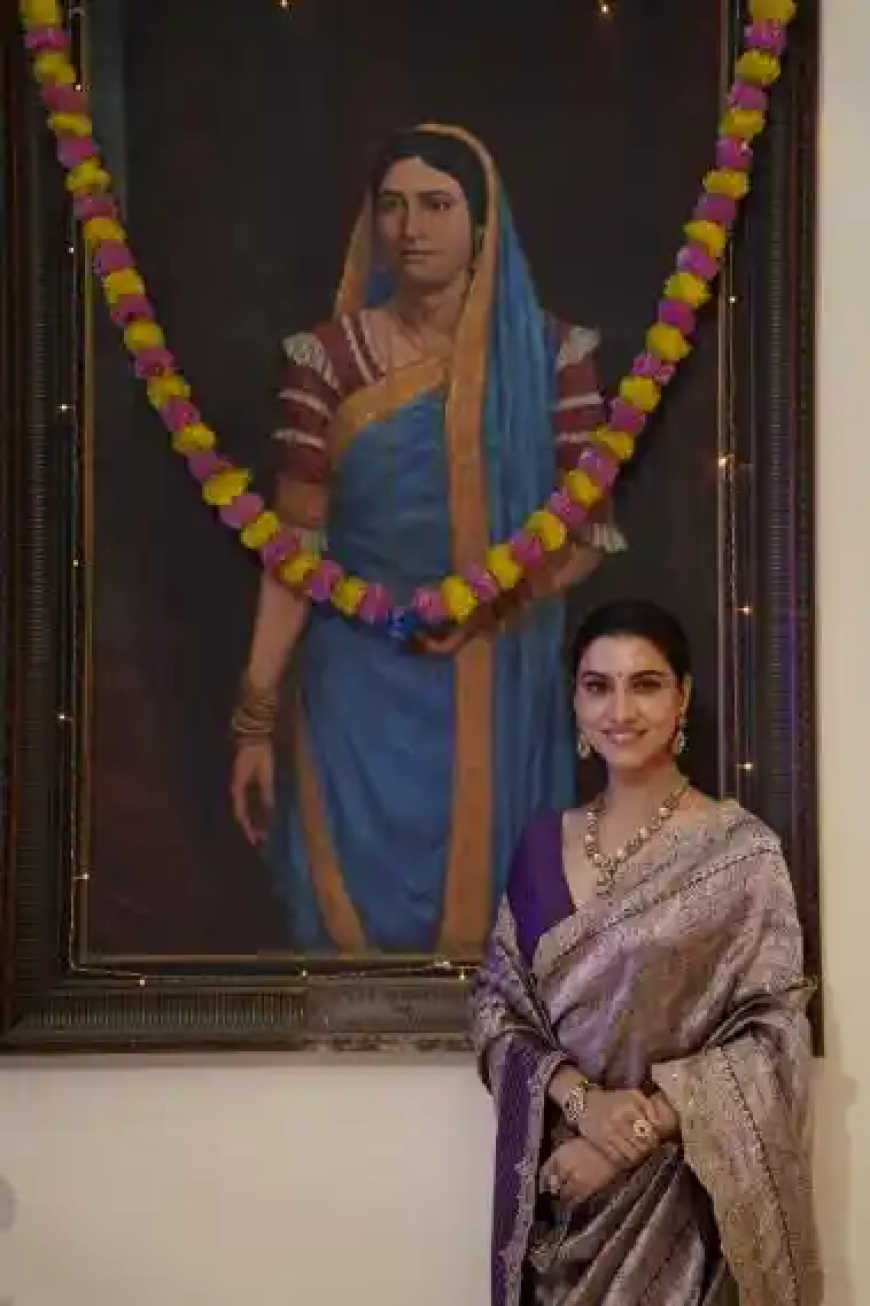THE ‘MANY’ BINODINIS OF BENGAL’S CULTURAL HISTORY BINODINI – EKTI NATIR UPAKHYAN
Dr. Shoma A Chatterji provides a detailed analysis of Binodini, past and present, truth and fictional. Her writing is based on around seven to eight productions of Binodini. She have watched down the years focussed on Ramkamal Mukherjee's new film on Binodini. It is a bit longer than my normal pieces but it demands that much depth and footage.
Binodini – Ekti Natir Upakhyan is one of the most challenging entries by a newbie director like Ramkamal Mukherjee who has grasped a lot of courage in both hands to make his directorial debut with a full-length, very ambitious feature film revolving around Noti BInodini.
Period films built around a historical figure should preferably refrain from presenting a lavishly designed, brilliant backdrop of a film based on the life and times of a historical character, more if she came from a red light area. The glamour and the razzmatazz of the world of Noti Binodini tends to strip away the emotional and social graph of her evolution from a little girl whose roots were in the dregs of the red light districts of Calcutta. Never mind that she rose to become the much-in-demand talented actress of Bengali theatre. This is precisely what makes the foundation of the film fragile and weak. The end-result is a lavish, loud, and very extravagant film taking away much of the Binodini we have heard, seen on the stage, television, cinema and read about.
Binodini – Ekti Natir Upakhyan began with a lot of research a few years ago. The making took long because the director, based in Mumbai, had to make frequent trips to Kolkata and many other stumbling blocks. Rukmini Maitra, who plays the title role, had to attend a long training session under noted actress Sudipta Chakraborty whose commercially hit play called Binodini Opera is a hit across the state and beyond. What sticks out like a sore thumb is the exquisitely beautiful Rukmini dressed up to ‘become’ Binodini who, as the photographs spell out, was not beautiful at all. She is heavily covered in ornaments that cover her upper torso almost completely, and is draped in magnificent saris right through the film.
Every director as the creative master of his film has every right to present and portray his film the way he chooses to, even if his perspective does nor does not coincide with the real story of the historical protagonist. Ramkamal is no exception. But as the story of Binodini is being staged on the Indian stage in several languages over decades, with improvisations and interpretations, too much of toying with the original story ‘as we know it’ can turn the film into a grand, cinematic opera like a lavishly mounted, historical extravaganza from the South. And this is precisely what has happened with Binodini –Ekti Natir Upakhyan.
The glamour, the glitz and the fiction sucks up the exploitation of a young woman who rose from the grassroots and struggled to live life on her own terms. But could she? Each betrayal hurts Binodini deeply and also deepens her commitment to theatre. The actual stage performances are marginalized and the narrative leans towards her emotional and sexual relationships.
The real Binodini played the title role in Prahlad as the male lead. Her other famous plays are Sri Chaitanya where she again performed the title role as a male and this part is choreographed, composed and presented beautifully in Ramkamal’s film and so is her meeting with Ramkrishna Paramahamsa (Chandan Roy Sanyal) though dragging this till the saint’s deathbed is a bit too much.
Her other significant performances were – Neel Darpan, Jyotirindranath Tagore’s Sarojini, and Dinabandu Mitra’s Sadhabar Ekadashi. Her first stage appearance in the newly constructed Star Theatre built by the generosity of Gurmukh Rai on Beadon Street was as Sati in Daksha Yajna in 1884. Her last stage appearance was in Bellick Bazar in the same theatre on January 1, 1887.
Binodini Dasi (1863-1941), better known as Nati Binodini knew how to read and write. The ‘nati’ in her name means ‘actress,’ replacing the “Dasi” she earlier carried. She carved an immortal place in the history of Bengali theatre not only for her talent and her versatility, but also for the sacrifices she made in the cause of theatre. She documented the story of her life in two separate autobiographies, Aamar Katha (My Story) and Aamar Abhinetri Jeebon (My Life as an Actress.) None of these find mention in the film.
Binodini is not the only one. She stands out because she was a lettered woman who charted out her life in her own hand. She was preceded by talented women like Nori Sundari Dasi, Kusum Kumari and many others. She was followed by Angoorbala, Tara Sundari, Kanakbala (Chhaya Debi), Kanan Devi, the most famous among them all. Tara Sundari Dasi (1878 – 1948) began her career in 1884 with the role of a boy in Chaitanya Leela directed by Girish Chandra Ghosh in Star Theatre.
In their research paper,[1] Madhumita Roy and Debmalya Das write: “The Bengal Renaissance ushered in the process of multifaceted modernization resulting in the major reshaping of the theatrical space both in terms of convention and praxis. Abandoning the convention of cross–dressing (where the earlier male actors were dressed as women to represent female characters), this new theatrical space began to accommodate the women actors for the representation of female characters. Parallel with the emergence of the “New Woman” in the upper middle class society of the nineteenth century, the women actors also constituted a segregated sphere of the emancipated women. Although “free” to encounter the public sphere, they were denied the degree of social acceptability/status that was otherwise available to the then upper middle class “New Women.”
“The remarkable quality in these ladies (which includes Binodini) was that no one among them was ashamed of the roots she belonged to and some flaunted their pride through their speech, oratory and writing. It was a time when theatre was considered taboo for women from mainstream society and this is the major reason that made theatre owners and directors draw their female actresses from the red light areas of the city. It was ‘displacement’ because even if mainstream society refused to acknowledge them as one of their own, the theatre audience crowded in week after week to watch them perform and sing buying tickets with gate money and craving for more.[2]”
Delhi's Theatre and Television Associates staged Nati Binodini (Hindi) under the directorial baton of Amal Allana more than a decade ago. Based on Rimli Bhattacharya's English translations of Binodini's two autobiographies, the play had a strikingly original design. Five different actresses portrayed Binodini, representing different ages, present on the stage at the same time. Except the seniormost actress, the other four were dressed and made-up identically. Structured in the flashback mode with the telescoping of the present and the past, the play opened with the octogenarian Binodini writing out her autobiography as it unfolds on stage.
As the old woman reads what she is writing, the past unfolds different layers of her life, segments from plays she has performed in, her interactions with her mother, a prostitute who forced her daughter to become a mistress, her relationship with her guru and mentor the famous Girish Chandra Ghosh, and her constant conflicts between her personal and professional life forced on her by none other than her peers on the stage and by her mentor himself. The acting cast performed brilliantly though to begin with, the structure was confusing with five actresses on the stage playing Binodini.
Cinematographer-director Dinen Gupta made Binodini, based on her life, in 1994 with Debasree Roy in the title role, Dilip Roy as Girish Ghosh and Prosenjit Chatterjee. It lacked frills and glitter but unfolded the sad tale of a woman who rises from the dregs of the sex world to the pinnacle of theatrical success.
In Binodini – Ekti Natir Upakhyan directed by Ramkamal Mukherjee, the actual theatrical performances are side-tracked with snatches of scenes from different plays focusing more on the beautiful Binodini’s sexual and emotional exploitation than on her genius as an actress. We find Binodini happily falling in the arms and on the bed of Kumar Bahadur (Om Shahani) one of her admirers for months together till she is reminded that she must be on the stage, performing under the guidance of her guru Girish Chandra Ghosh. Gurmukh Rai (Mir Afsar Ali) her next benefactor who played a very significant role in Binodini’s life, is marginalized.
Kaushik Ganguly as Natasamrat Girish Chandra Ghosh is brilliant as usual while Rukmini is awkward in some places, okay in others and brilliant in the Sri Sri Chaitanya scene. She is just too beautiful, sophisticated and modern to fit into the mediocre looks of the original Binodini. Chandreyee Ghosh as Golap who tends to Binodini like a mother proves once again what an underutilized actor she is while Gautam Haldar as theatre owner Dashu Babu overacts terribly. Rahul Bose as another admirer of Binodini is almost an add-on as his contribution is limited. Soumik Haldar’s cinematography offers a model lesson on how to cinematograph a lavishly mounted ‘period’ film.
The single strain of a famous Tagore number is used as a constant refrain on the music track adds to the pensive and tragic mood of the film. Two songs, one sung by Shreya Ghoshal and the other by Suchismita Chakrborty who belts out an original Girish Ghosh composition, are good but whether they add to the narrative or not is an intriguing question. The costumes, specially of Binodini, are too lavishly designed for the period she belonged to. Her shift into Girish Ghosh’s home is illogical as no girl from the red light area would be allowed to stay in a bhadralok’s home. More than necessary footage has been devoted to Binodini’s shaping up to becoming a ‘lady’ such as learning to read, write and speak English, playing the piano and communicating with foreign guests who step in the Natasamrat’s lavish interiors.
When the theatre company that took Binodini to starry heights began to collapse, in 1883, her mentor, Girish Ghosh persuaded her to become the mistress of Gurmukh Rai, a rich Marwari businessman, a devoted fan of Binodini. The actress, hating to go back to her old life of prostitution, rejected the idea. But her love for the stage and empathy for her peers whose lives were endangered, won and she succumbed to pressure. Instead of accepting a cheque for Rs.50,000 from Rai, Binodini asked him to build a theatre hall.
Rai agreed on condition that the theatre hall would be named B-Theatre, after the first letter of Binodini's name. But after the theatre's name was registered, Binodini was shocked to discover that her name was rejected in favour of another name, Star, in 1884. Her peers and mentor had decided that a theatre house named after a prostitute would fail to draw audiences. Sadly, years later, this Star Theatre was demolished to widen the road on which it stood.
Binodini remains an enigma because her end remains as mysterious as her life was. Did she voluntarily walk away from the stage one fine day and was never heard of again? Or, did she remain in the wings as a guide and teacher, not stepping onto the stage again? Or, did she follow Thakur Ramakrishna Paramhamsa when he walked up to her after her sterling performance as Sri Sri Chaitanya Mahaprabhu? No one knows.
Take a deep bow Ramkamal and team for the grit, the determination and the courage to debut with a difficult film like Binodini – Ekti Natir Upakhyan.
What's Your Reaction?







